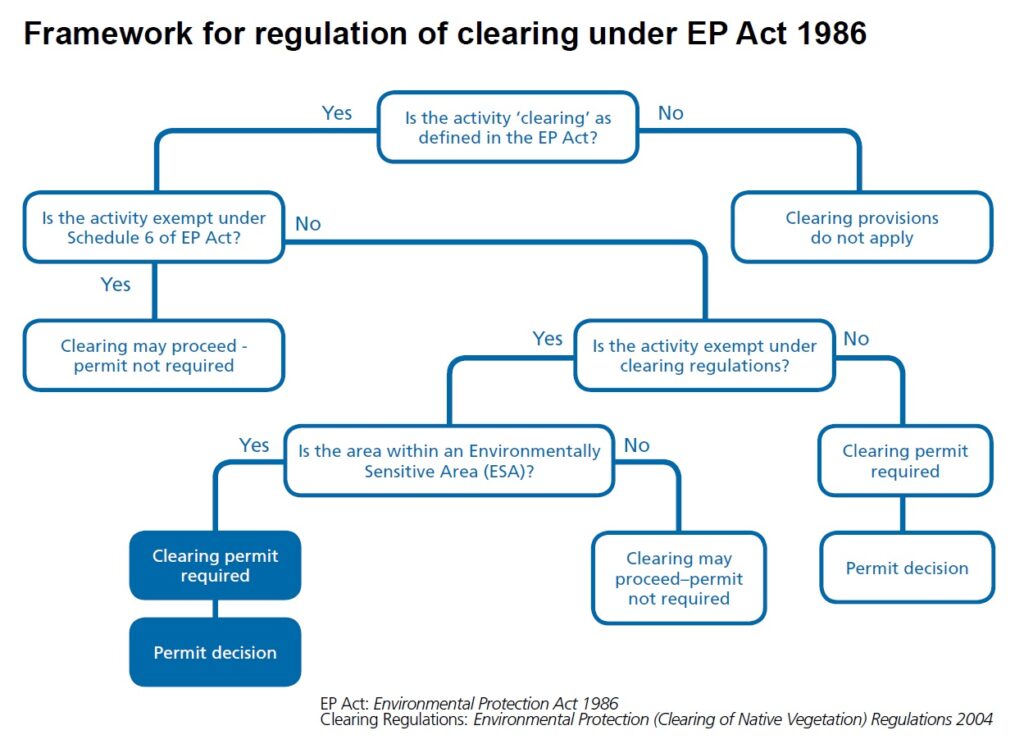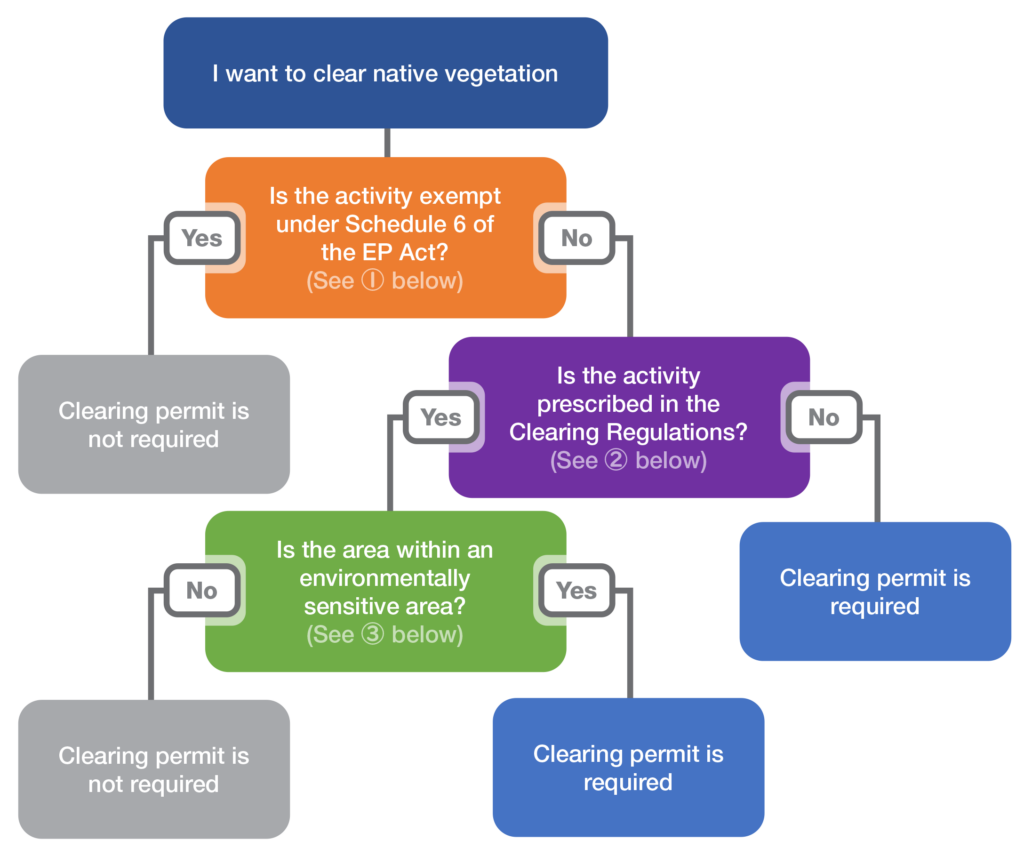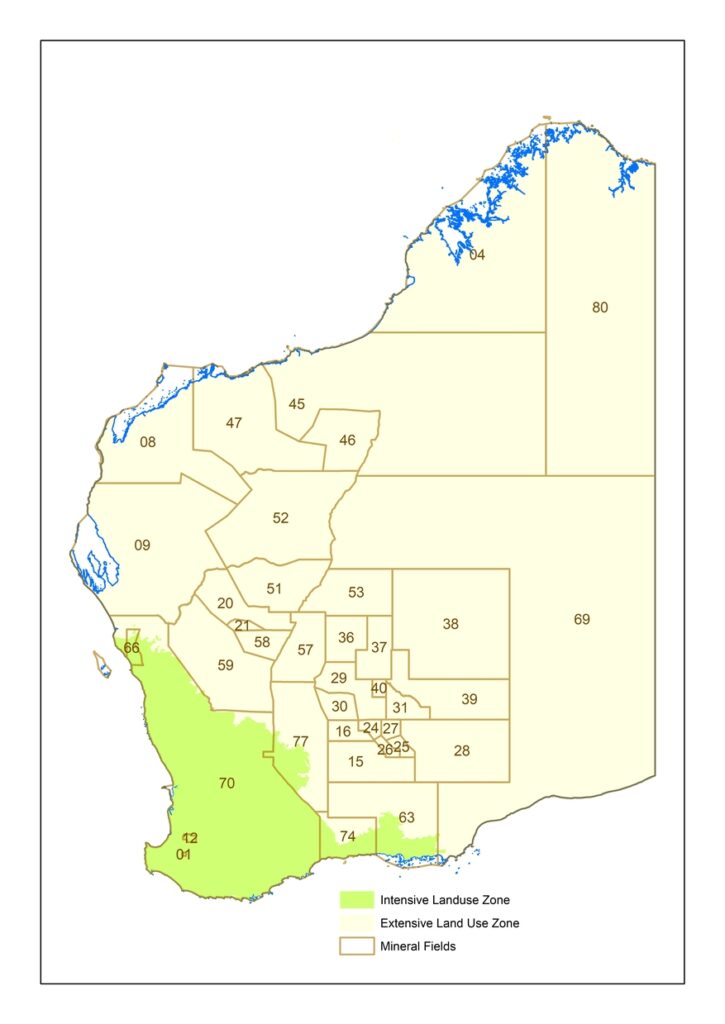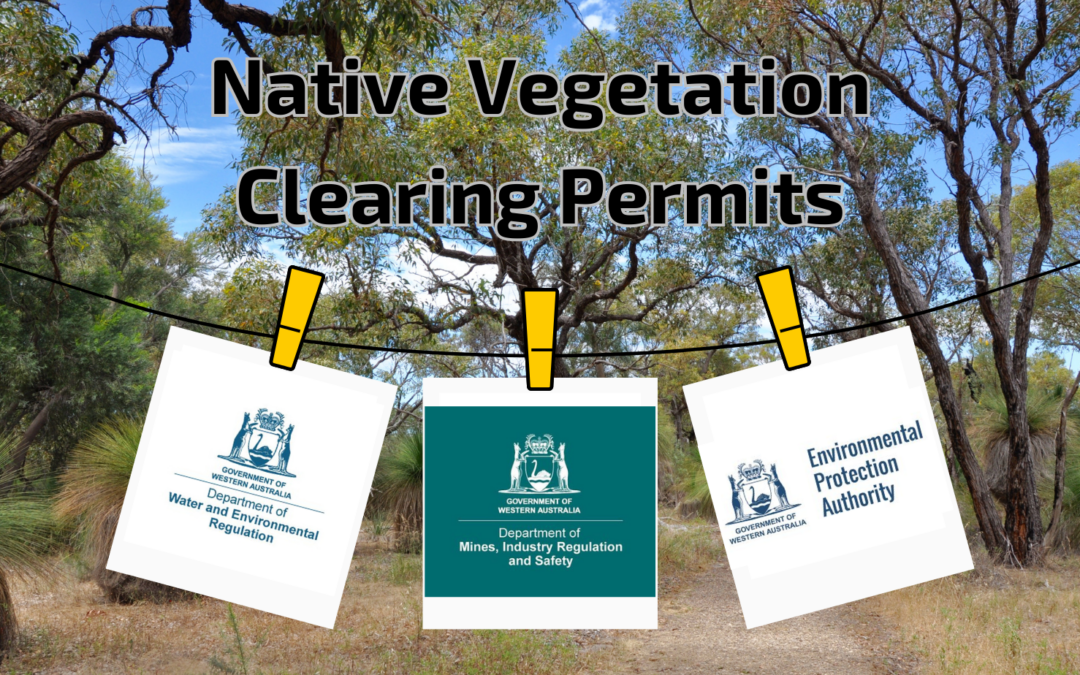Native vegetation clearing permits are the tools used to manage the clearing of native vegetation in Western Australia. Clearing is defined in the Environmental Protection Act 1984 (WA) (EP Act) as the killing, destruction, removal, severing or ringbarking of the trunks or stems of or any other substantial damage to some or all of native vegetation in a given area. This could come in the form of draining or flooding the area, burning vegetation, grazing stock, or other such activity. The introduction of Clearing Permits in WA was one of the steps adopted by the State to understand better the volume of clearing occurring each year.
Legislation
Clearing of native vegetation is regulated under Part V of the EP Act and its subsidiary legislation, the Environmental Protection (Clearing of Native Vegetation) Regulations 2004. Native vegetation clearing in WA is regulated by the Department of Water and Environmental Regulation (DWER) except where it relates to mining or petroleum activities. In this situation, the Department of Mines, Industry Regulation and Safety (DMIRS) has been delegated that responsibility (DWER, 2023).

When is a permit needed, and are there different types?
Based on the EP Act, whoever wishes to clear native vegetation must apply for a clearing permit from the DWER (or DMIRS if the purpose is mining or petroleum) unless they are either granted an exemption or the activity has been assessed under Part IV of the EP Act or it has been determined a permit isn’t needed because the activities are classed as very low impact. To be considered very low impact, clearing needs to satisfy all of the following criteria:
· that the area to be cleared is far smaller than the remaining area or otherwise less than five hectares, and
· there are no known or likely significant environmental values within the area, and
· the state of scientific knowledge of vegetation in the region is adequate, and conditions will not be required to manage any environmental impacts (DWER, 2023).
However, some exemptions don’t apply to regions designated as ‘environmentally sensitive areas’. In this case, the criteria don’t matter, and a permit will be required (DWER, 2023).

When a permit is granted, it may include conditions that must be complied with while the permit is in use. This may include rehabilitating land once the proposed activity is concluded or relocating some of the vegetation to a placeholder area.
If a permit is required, there are two types. One is an “area permit”, which is applied for by the owner of the land or someone else with permission from the owner to clear defined areas specified in the permit. The other is the “purpose permit”, which is applied for by an applicant who may or may not be the owner but has the authority under the law (such as the Mining Act) and has permission to access the land to conduct the clearing. Purpose permits enable the clearing of different areas from time to time for a specific purpose (DMIRS, 2023). If the applicant of a purpose permit is not the owner, they may instead be a Mining Company, local government official or a utility provider (DWER, 2023).

When is a permit not required?
Schedule 6 of the EP Act defines where permits may not be required. This includes if the clearing is mandated by another law like the Bush Fires Act 1954, where clearing is done for fire control if the proposal has been assessed by the Environmental Protection Authority (EPA) and authorised if the clearing is to be carried out by the Department of Biodiversity, Conservation and Attractions (DBCA) or to be carried out for a culturally important function by the indigenous person (DWER, 2019). Permits are also not required if the activity is prescribed as per the Environmental Protection (Clearing of Native Vegetation) Regulations 2004. A good example of this is a plantation of intentionally planted species for the purpose of commercial exploitation, such as crops on a farm (DWER, 2019).

Enforcement
Laying out the law is one thing. Enforcing it is a different matter entirely. How can the government ensure that landowners and other applicants are doing the right thing by their permit requirements? There are some easy and obvious solutions to this question, such as granting powers to representatives from DWER and DMIRS, to enter the landowner’s premises without permission of the landowner to check if the conditions are being satisfied or the use of satellite imagery to monitor land clearing to ensure the areas cleared align with permits and that no unauthorised clearing is occurring.
Otherwise, if anyone observes a clearing activity that they suspect as being unlawful, they can access the Clearing Permit System, search the location of the observed activity to get details on who’s performing the clearing and fill out a form online to submit to the government so they can investigate the site as appropriate (DWER, 2023)
Penalties and fees
In the event that clearing occurs without a permit or alignment with the approval exemption, DWER can apply penalties. One way to do this is to apply penalties for unlawful clearing or ignoring or contravening the conditions associated with a permit. The penalties can get very hefty, more so for corporate bodies than individuals. For example, unlawful clearing without a permit can result in penalties of up to $250,000 for individuals and $500,000 for corporate bodies. Contravening the permit conditions can result in penalties of up to $62,500 for individuals and $125,000 for corporate bodies (DWER, 2020). If the infraction amounts to environmental harm, penalties can vary depending on severity and intent (Table 1).

Another way is to treat clearing like a privilege one would have to pay for to begin with, even if it were legal. This can come in the form of fees as laid out in the Environmental Protection (Clearing of Native Vegetation) Regulations 2004. These fees are far less punishing than penalties, and so would incentivise landowners, if they have to clear with a permit, to apply for a permit and adhere to it as a safer option. These fees increase with the location in the state. For example ‘Intensive Land-Use Zone’, which corresponds to the south-west area of Western Australia, costs more for a permit than other areas in WA. There are also very small fees to amend or surrender a permit if the clearing activity is considered concluded (DMIRS, 2023).
Integrate Sustainability Pty Ltd understands the ecological and cultural importance of Western Australia’s natural heritage and the role that clearing permits play in helping to protect WA’s environment, so if your company wants more information on the kinds of permits that may be required for a clearing operation, what exemptions apply and if the area that could be affected is environmentally protected, call us on 08 9468 0338 or email us at enquiries@integratesustainability.com.au.
References
DMIRS. (2023). Native vegetation clearing permit lodgement. Retrieved from Department of Mines, Industry Regulation and Safety: https://www.dmp.wa.gov.au/Environment/Native-vegetation-clearing-28492.aspx
DMIRS. (2023). Native Vegetation Clearing Permits and Referrals. Retrieved from Department of Mines, Industry Regulation and Safety: https://www.dmp.wa.gov.au/Environment/Native-Vegetation-Clearing-4905.aspx
DWER. (2019, August). A guide to the exemptions and regulations for clearing native vegetation. Retrieved from Department of Water and Environmental Protection: https://www.der.wa.gov.au/images/documents/your-environment/native-vegetation/Guidelines/A%20guide%20to%20the%20exemptions%20and%20regulations%20for%20clearing%20native%20vegetation.pdf
DWER. (2020, April). Clearing offences and penalties. Retrieved from Department of Water and Environmental Regulation: https://www.der.wa.gov.au/images/documents/your-environment/native-vegetation/Fact_sheets/Clearing%20offences%20and%20penalties%20fact%20sheet.pdf
DWER. (2023, May 22). Guideline: Native vegetation clearing referrals. Retrieved from Government of Western Australia: https://www.wa.gov.au/government/publications/guideline-native-vegetation-clearing-referrals
DWER. (2023, May 19). Native vegetation clearing permit forms. Retrieved from Government of Western Australia: https://www.wa.gov.au/service/environment/environment-information-services/native-vegetation-clearing-permit-forms
DWER. (2023, May 31). Native vegetation clearing permits. Retrieved from Government of Western Australia: https://www.wa.gov.au/service/environment/environment-information-services/native-vegetation-clearing-permits
DWER. (2023, May 19). Unlawful clearing of native vegetation. Retrieved from Government of Western Australia: https://www.wa.gov.au/service/environment/environment-information-services/unlawful-clearing-of-native-vegetation
Environmental Protection Act 1984 (WA)

